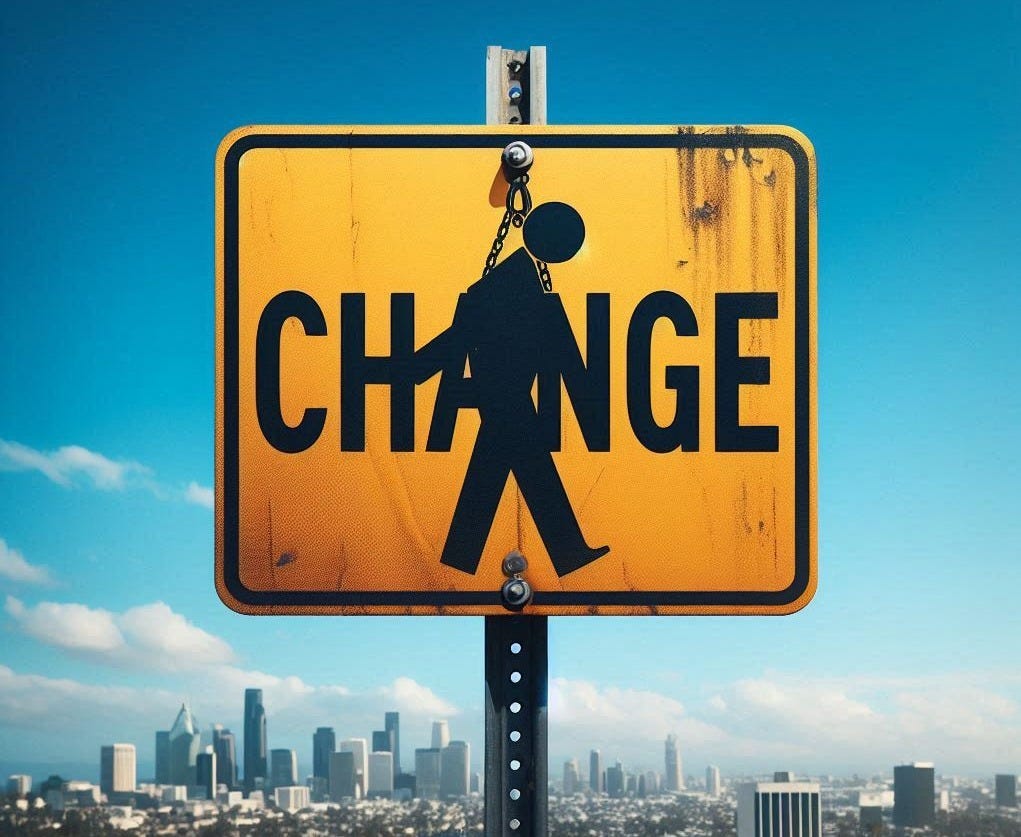“Ready or not, here I come.” This is what change says to everyone. It doesn’t ask whether or not you’re able to adapt to it. It doesn’t care if you don’t like how it looks, sounds, or feels, but it handsomely rewards all who embrace it and everything that comes alongside it. It’s no secret that most are resistant to change, especially when money is involved. However, there are times when resistance to change can be exceedingly detrimental to one’s future. Recent events lead me to believe that we are in said times.
Our financial system relies on perpetuity. Leverage, suppressed volatility, capital concentration, and cheap financing help sustain this state. Thus, carry trades — anything structurally short volatility — permeate every asset class. This leaves the system precariously vulnerable to change.
History shows that any major disruption of the status quo aligns with a forceful, violent unwind of carry trades thereby marking the entrance into a new regime and a turning point for commodities and real assets. The end of the classical gold standard in 1933, the end of Bretton Woods in 1971, and the 1997 Asian financial crisis all served as catalysts for an unwinding.
Recent comments from this incumbent administration such as Bessent’s “we are going to have to have some kind of a grand global economic reordering” and Trumps’ “this is a period of transition because what we’re doing is very big” displayed their adamancy towards disrupting the status quo and made it clear that it was on borrowed time. Whether or not one believes that their policies will produce their intended results is ultimately negligible. What matters is that on April 2nd, 2025, otherwise known as “Liberation Day”, the world changed significantly.
Coming into the year, I felt strongly that this would be a transitional period, and that many would learn the differences between Trump 1.0 and Trump 2.0. In Q1, I saw several signs that monumental change was afoot. Multi-month distribution, non-consensus dollar weakness, record foreign capital outflows spurred by fiscal divergence, index correlation at virtual all-time lows, lofty valuations, cyclicals signaling a peak and subsequent downturn in growth, & a notable shift in leverage taking all pointed to a perfect storm for change.
Shortly after April 2nd, it was apparent to me that we had just witnessed a regime change as monumental as the end of Bretton Woods in 1971. The similarities are uncanny. Flaring geopolitical tensions, concerns about the US trade deficit brought to the forefront, political pressure on the Fed for accommodative monetary policy to offset the shock, & price controls gave way to a period of global economic instability and uncertainty.
The Smithsonian Agreement — introduced 4 months later to restore stability to the monetary system — was too little, too late. The regime shift was already well underway, and it led to the development of modern finance & the full shift to fiat currency. To weather the storm, investors shifted asset allocations to commodities and real assets.
More recently, in 2022, carry trades unraveled due to inflation and the drastic shift in monetary policy. Energy was one of few sectors to notch gains. It materially outperformed the market and proved that diversification in today’s world is owning assets that do well when things change. Note that this occurred without a fundamental shift in the global monetary order. We now have that. I know it may not have felt like it, but energy was the best performing sector in Q1, and this was not by chance. When the dust settles and people begin to acknowledge the regime shift taking place, energy will be a great place to be.
Furthermore, due to the embedded asymmetry in monetary & fiscal policy, the current regime shift will likely bring about an environment where we see dollar down, stocks down, yields up action amidst stagflation, assets that have been systematically starved of capital outperform as the hyper-financialization lever gets turned off, and the shift from fiat to digital currency is ushered in — for what it’s worth, I don’t think Bitcoin solves this ;)
Convinced that nothing has changed, investors have been fixated on the road to new all-time highs, but the chances of reaching them this year have notably decreased. What started as a market degrossing episode where multi-strat hedge funds and pod shops struggled morphed into a VaR shock. Having transpired after funding spreads dropped precipitously in mid-December, signifying a decrease in risk appetite from institutions, it becomes much more difficult to reach new highs as the rally engine was leverage — and it’s been cut.
This focus on equity returns in spite of drastic regime change is a testament to what hyper-financialization — which ironically perpetuates wealth inequality — has done to the minds of many investors. It’s left them feeling entitled to 20% yearly returns as if they are a God given right. It’s caused some to default to virtue signaling when markets are no longer on easy mode. Suddenly they care about everybody else’s portfolios. Suddenly they become the most outspoken about political and geopolitical affairs, desperate to blame someone for their losses. Whereas beforehand they were simply concerned with the stocks du jour. Your worst enemies in times like these are emotion and linear thinking. Never be a slave to either.
To those who are consumed by media-driven efforts to sow seeds of division, entrapped by partisanship, or motivated by emotionally charged hatred, the market’s YTD performance cannot be attributed to tariffs. Gold has not been surging against the dollar in spite of Western apathy for it because of tariffs. As Seneca once said, “All this tribalizing from day to day won’t bring you any relief, for you’re traveling in the company of your own emotions, followed by your troubles all the way.”
It’s all about change. Say goodbye to the status quo.


